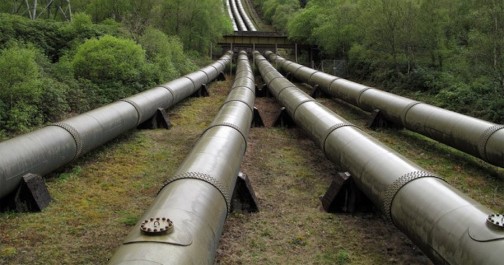Water transport has progressed from early rafts and canoes to the modern large passenger and freight ships.
Rafts
A raft is a simple floating structure, usually made by tying together floating material like animal skin, papyrus
stalks or logs.
The earliest people to make rafts were the Australians. They made rafts called catamaran by tying logs
together. Long poles were then used to drive the raft.
Rafts however sank easily and required a lot of manpower upstream.
Canoes
A canoe was a narrow boat that was propelled by one or more paddles. The oldest canoe was made by
stripping the bark from trees (bark canoes). Later a new canoe was made from a hollow on a log (dug-out
canoe).
Oar-driven Boats
Boats are small vessels for travelling on water and are powered by oars, sails or motor. The Egyptians
pioneered in the building of boats that used oars (a short wooden pole with a flat end) instead of paddles in
3000BC.
Sailing Ships
Humankind learned that the wind could move a boat more easily than human beings if the ship had a piece of
cloth fixed on poles (sail). The Egyptians used the sailing ships by 3000BC on the Mediterranean and Red seas.
The Greeks made sailing ships known as galleys which were used for trade and war. They used war galley
known as triremes to defeat the Persians and Phoenicians.
Canal Vessels
A canal is an artificial river that is used to transport people and goods.
Apart from transportation, their water may be used in irrigation like in the case of
River Nile.
Canals have been used for centuries for transportation.
The longest canal, the Grand Canal in china is bout 1900km long and it links the Yangtze and Yellow rivers.
Canal building in Europe was pioneered by the Romans who built them for transportation, irrigation and
drainage.
Another type of canals is the ship canals, for example the Suez Canal, Panama Canal and Kiel
Canal, which are deeper.
Steamships
Steamships were made after the invention of the steam driven engine.
The first attempt to make a steamship was made by Dr. Denis Papin of France when he fitted a steam engine to a boat and sailed along river Fulda in
Hanover.
The first successful steamboat was built and tried out in1783 by a Frenchman called Marquis de Jouffrey on
River Saone near Lyons in France.
In America, John Fitch built a steamboat in 1787. It was used on river Delaware between Philadelphia and
Trenton.
In 1809, William Symington and Miller Pat succeeded in constructing a wooden steamship that was used on
the Forh-Clyde Canal in southern Scotland.
In 1807, in America, Robert Fulton had invented a double –paddle-wheeled steamboat known as Clermont
which began operating on the Hudson River.
In 1807, the phoenix became the first steamship that made regular voyage from Philadelphia to New York.
In 1819, the savannah became the first ship equipped with a steam engine to cross the Atlantic Ocean.
In 1853, the peninsular and oriental Line built the iron-screw steamer, Himalaya, the biggest vessel as at that
time.
John Elder invented a compound engine with two cylinders which reduced fuel consumption in steamships.
In 1838, Sirius sailed from London to New York, the Great Western, without using sails crossed the Atlantic in
15 days from Bristol.
In 1839, the Archimedes and the Robert F Stockton were built using Smith’s and Ericcson’s patent.
The most important ship to cross the Atlantic was the Great Britain built by the Islamabad Kingdom of Brunei
in 1843.
The first USA trans-Atlantic steamers were the Herman and Washington.
The first merchant ship to be all-welded without any rivets in its hull was the MS Fullagar in 1920.
Importance of the discovery and use of the steamship.
- Man could no longer depend on nature –wind for power. This made travel by sea easier and more
comfortable.
- It led to expansion of international trade since transportation became cheap.
- Bigger volumes and varieties of goods could be carried including those that required special handling like
petrol.
- It formed the basis for colonization as colonizers could move to other continents easily.
- It increased international migrations and spread of races , cultures, diseases , intermarriages, languages
and religion.
- It led to greater expansion of geographical knowledge. It gave access to countries bordered by sea.
- It led to expansion of world economies, industries, trade and commerce.
- Spread of plants and animals internationally.
Motor-Driven Ships
There are two types of ships based on the service offered;
- The Liners operate regular scheduled services on defined trade routes charging advertised rates.
- The Tramp ships carry any suitable cargo between any two points based on a negotiated contract. They
have no regular route or timetable.
Modern Passenger Liners
The cruise ship, the most important passenger liner, is a specially designed vessel providing luxurious
surroundings and entertainment to passengers. It is about 270 m and carries 2000 passengers.
Freight Vessels
These are Special Ocean going ships designed for carrying large amounts of cargo.
Military Vessels
In 1859, the French launched Gloire, the first iron-plated ship. During the American civil war (1861-1865), two
iron-plated ships were used.
In world war II, battleships, Aircraft carriers (can carry 85 aircrafts) , cruisers, destroyers, destroyer
escorts(frigates), minesweepers, torpedo boats, landing craft and other support vessels were
developed.
Hydrofoils and hovercraft.
These are specialized water vessels used to transport people, animals and vehicles over water in places where bridges would be
inconvenient or impossible to build.
Motorboats and Personal Craft
These are small boats that are used for recreational purposes with either out boat motors or in boat motors.
